Whisks—also called whips—are essential tools in any commercial kitchen. They come in various shapes and sizes to accomplish specific culinary tasks. In this article, we talk about the wonderfully nuanced world of whisks, explain the difference between popular commercial kitchen varieties, and touch upon the history and science behind these fundamental utensils.
From Twigs to Wires
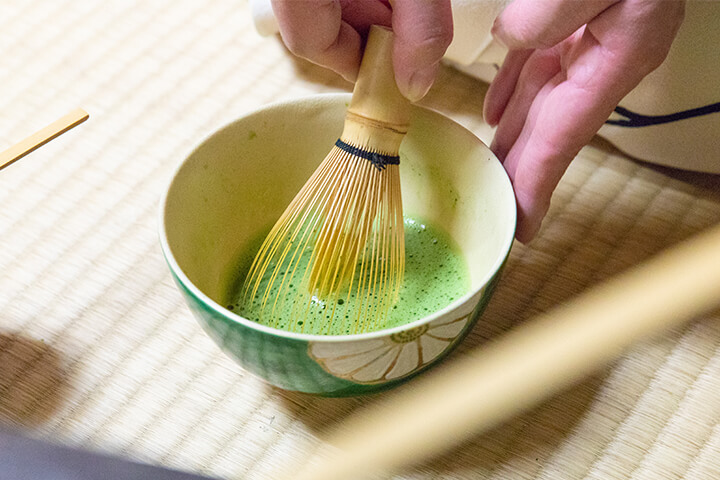
The concept of whisking ingredients dates back to ancient civilizations. The earliest iterations, found in ancient Egypt, Rome, and Greece were bundles of twigs or branches. These tools evolved over time to include more sophisticated wood pieces, metal, and even feathers. Throughout their evolution, different cultures have brought forth niche whisks. For instance, one such niche whisk would be the Japanese chasen, which has been used for centuries to prepare frothy matcha.
19th-Century Whisks & Beyond
Whisks began to resemble the modern designs we’re familiar with in the 19th century, as people turned to wire whisks to effectively blend ingredients and incorporate air. The popularity of French cuisine in the 19th century also contributed to the refinement of whisk designs as chefs emphasized the importance of precise techniques and proper utensils to carry out these techniques. With advancements in materials and manufacturing, modern whisks now come in a wide range of designs.
Exploring Whisk Wizardry
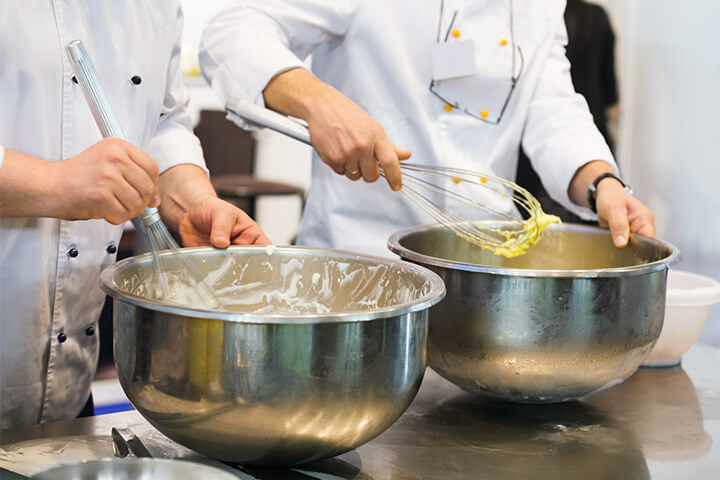
Using a variety of whisks skillfully—to achieve precise textures and flavors—is a hallmark of a chef’s career. For instance, whisks:
- incorporate air into ingredients to create light textures;
- emulsify mixtures and sauces that require the stable suspension of oil and water;
- create frothy and foamy textures in beverages like cappuccinos;
- assist in the temperature control of ingredients.
These are just a few examples of the range of tasks whisks are perfectly equipped for. So, how do these simple tools accomplish so much? Let’s look at the science behind these commercial kitchen favorites.
The Science Behind Whisking
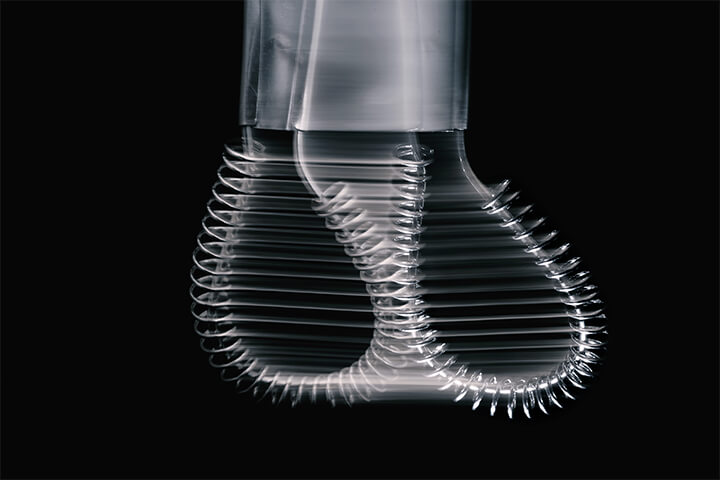
The effectiveness of a whisk lies in its ability to mix and blend, which are processes governed by the principles of fluid dynamics, turbulence, vortices, and aeration.
Fluid Dynamics and Turbulence
When whisks are introduced into a liquid mixture, they creates turbulence, or the chaotic and irregular movement of the ingredients. This is particularly evident in liquids of varying viscosities, such as batters or sauces. This turbulence facilitates the even distribution of ingredients, leading to better blending.
Vortices and Mixing
As the wires of a whisk move through the mixture, they cut through the liquid, creating vortices. These circular, spiraling vortices create a dynamic and complex mixing pattern within the mixture. The formation of vortices aids in the breakdown of larger particles, effectively blending them into the surrounding liquid.
Aeration
As whisks move rapidly through mixtures, their wires cut through the liquid, creating bubbles of air that get trapped in the mixture. These small air bubbles then expand and rise to the surface due to their buoyancy, aerating the mixture. As you will see, certain types of whisks excel at aeration where others do not. It all depends on the whisk’s design.
Physics of Wire Design
The spacing and curvature of the wires impact how efficiently whisks create turbulence and incorporate air. Wires that are close together might impede the flow of liquid, while wires that are far apart might not effectively break up and blend ingredients.
Understanding the intricate physical characteristics of various designs can aid new chefs in optimizing their culinary techniques and developing innovative food preparation methods. Next, we’ll help you distinguish different kinds of commonly used whisks and how to maximize their usefulness.
A Smorgasbord of Whisks
There are many kinds of whisks, each designed for specific culinary tasks and ingredients. Below, we parse out the advantages and disadvantages of seven varieties commonly found in commercial kitchens.
Ball Whisks
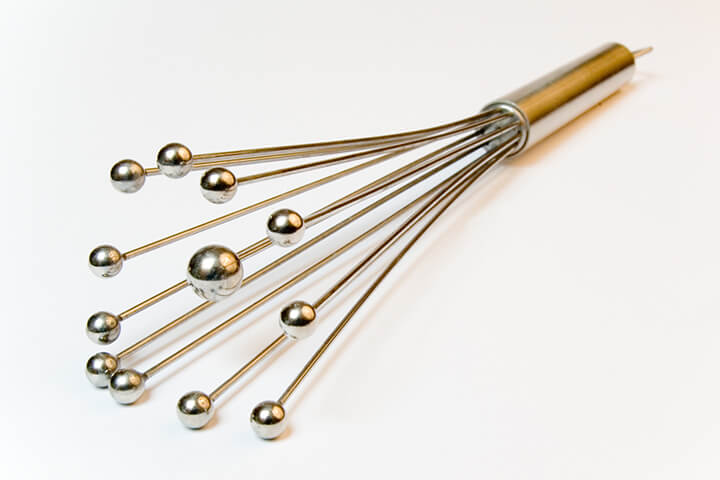
Ball whisks feature a series of thin, rigid wires that are curved into a spherical shape. These wires are evenly spaced and converge at the top to create a hollow, spherical structure.
Advantages & Disadvantages of Ball Whisks
Ball whisks are particularly adept at:
- Incorporating air into mixtures.
- Whipping cream, beating egg whites, and creating fluffy batters.
- Blending and mixing ingredients in small containers.
Ball whisks are not ideal for heavy mixing.
Balloon Whisks
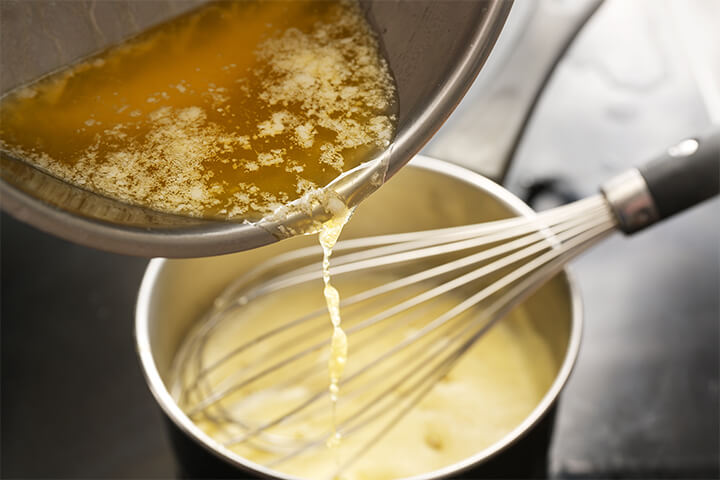
These popular tools have a bulbous, rounded shape with multiple wire loops that form a balloon-like appearance.
Advantages & Disadvantages of Balloon Whisks
Balloon whisks excel at:
- Aerating ingredients like eggs, cream, and batters, to create light and fluffy textures.
- Emulsifying oil and water-based liquids for sauces, vinaigrettes, and dips.
- Efficiently mixing dry and wet ingredients to form smooth batters, sauces, and dressings.
- Smoothing out sauces.
Balloon whisks may not be as precise as other types for tasks that require delicate mixing. Additionally, its rounded shape makes it less suitable for navigating tight spaces or corners.
Dough Whisks (Danish Bread Whisks)
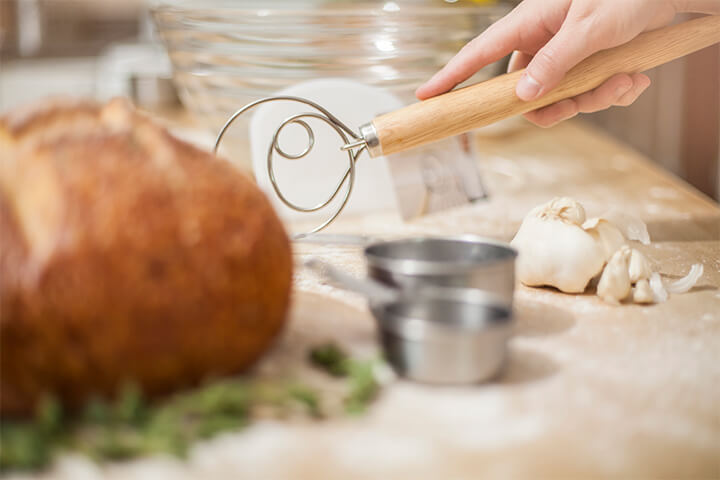
The working end of the dough whisk features a series of thick, sturdy wires that form a looped head. The handle of a dough whisk is usually made of wood or another comfortable-to-grip material.
Advantages & Disadvantages of Dough Whisks
The unique design of the wire loop head allow dough whisks to excel at:
- Mixing and blending dough efficiently.
- Effortlessly incorporate dry and wet ingredients.
- Ensuring even distribution without overworking the dough.
- They tend to be less sticky than wooden utensils.
- Less dough residue clings to the whisk, making it easier to clean.
- Using a dough whisk is also less physically demanding compared to kneading dough by hand.
Dough whisks aren’t versatile in their design and are limited to working with dough.
Flat Whisks (Roux Whisks)
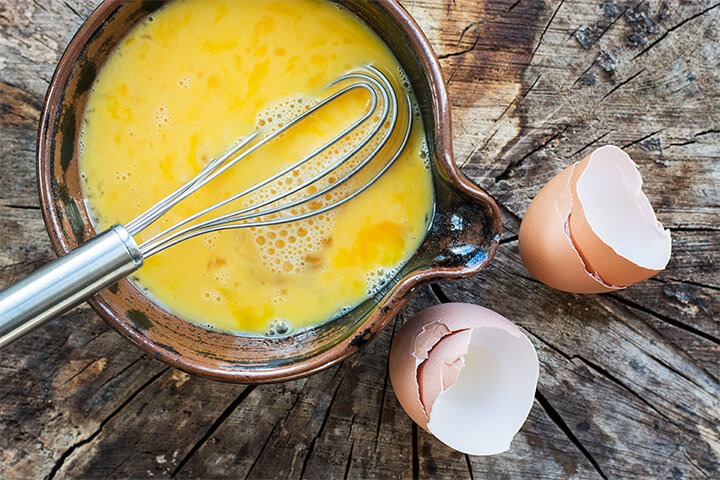
A flat whisk has a wide, flat shape.
Advantages & Disadvantages of Flat Whisks
Flat whisks are particularly effective in:
- Mixing and incorporating ingredients evenly.
- Working with roux, sauce, gravy, and other mixtures that require a smooth consistency.
- Deglazing pans: flat whisks easily reach the corners and edges of pans, loosening flavorful bits that are often stuck to the surface, which is essential for creating rich and delectable sauces.
- Controlling the temperature: flat whisks dissipate heat quickly when stirring hot liquids, preventing overheating, and ensuring even cooking.
Flat whisks aren’t as effective as, for example, a balloon design in terms aeration. Their shape creates fewer vortices, and as a result they don’t trap as much air. While they can handle some robust tasks in a pinch, they aren’t best choice for working with heavy, dense dough. Lastly, the wide, flat shape isn’t as maneuverable as smaller whisks.
French Whisks (Roulette, French Whips, or Piano Whisks)
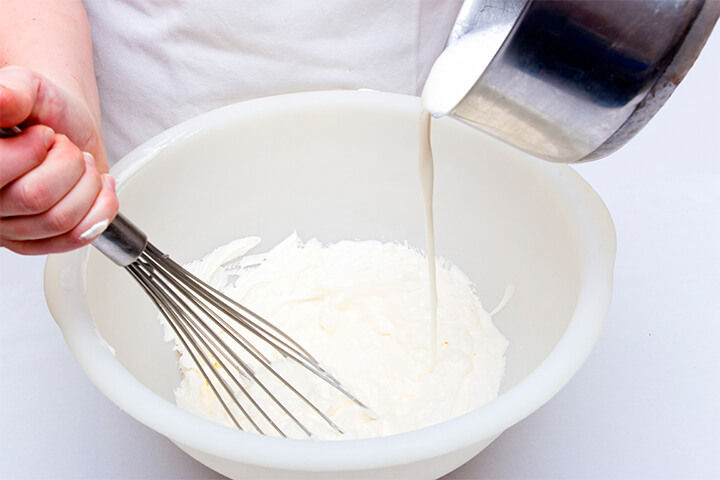
Similar to the balloon whisk, French whisks are narrower and elongated with a handle and a set of thin, flexible wires that extend from the handle’s end. They do not form a bulbous shape. Instead, they are evenly spaced and arranged in a straight or slightly curved manner.
Advantages & Disadvantages of French Whisks
This popular type of whisk makes short work of:
- Mixing sauces or roux, where precise control over thickness and texture is essential.
- Reaching into the corners of pots and pans to achieve even blending.
- Creating stable emulsifications. The delicate yet precise wires of a French whisk facilitate the gradual incorporation of oil, resulting in a smooth and well-emulsified sauce.
- Evenly distributing ingredients like herbs and spices, ensuring consistent flavor throughout the dish.
- Working in small pots and containers.
Because they are narrow, French whisks aren’t the most efficient choice for mixing large quantities of ingredients or mixing thick batters.
Silicone Whisk
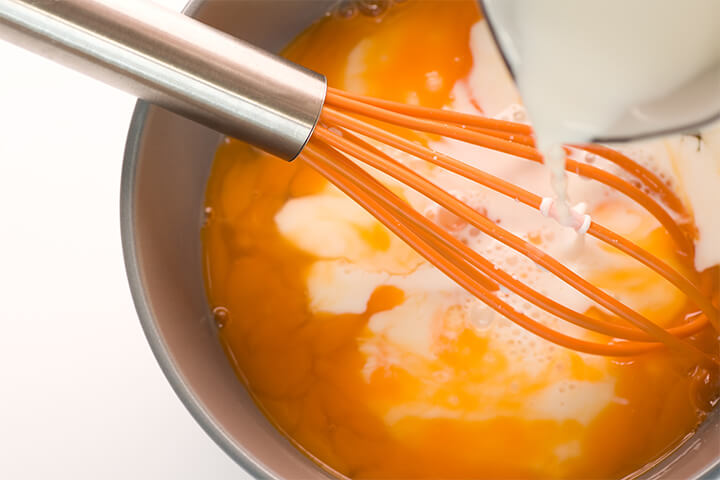
In lieu of metal wires, a silicone whisk has silicone-coated wires. The thin silicon wires or loops are flexible and springy.
Advantages & Disadvantages of Silicone Whisks
Silicone whisks are suitable for:
- Mixing ingredients in delicate pans.
- Keeping equipment free of scratches.
- Resisting heat.
- Working with delicate ingredients.
Silicon whisks aren’t as precise or sturdy as wire whisks.
Spiral Whisks (Sauce Whisks, Coil Whisks)
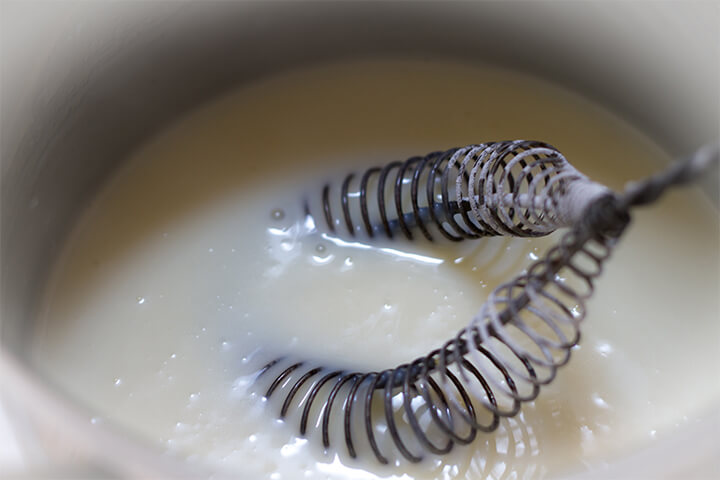
This whisk uses a single wire that is coiled into a spiral shape.
Advantages & Disadvantages of Spiral Whisks
Spiral whisks are ideal for:
- Mixing small batches of ingredients.
- Breaking up lumps in flour, cocoa, and other powders.
- Introducing air into mixtures.
- Blending dry rubs and marinades.
For tasks that require more precise control or delicate emulsification, other whisk types like flat whisks or balloon whisks are more suitable.
Whisking Your Way to the Top
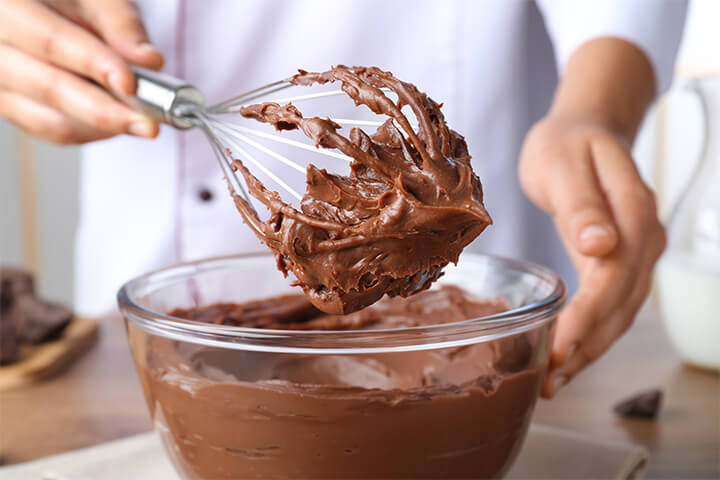
Whisks are essential kitchen tools for chefs and bakers. Despite their simplicity, they are thoughtfully designed, nuanced tools that have evolved over centuries of culinary history. Have you discovered any untraditional uses for whisks in the kitchen? Let us know in the comment section!

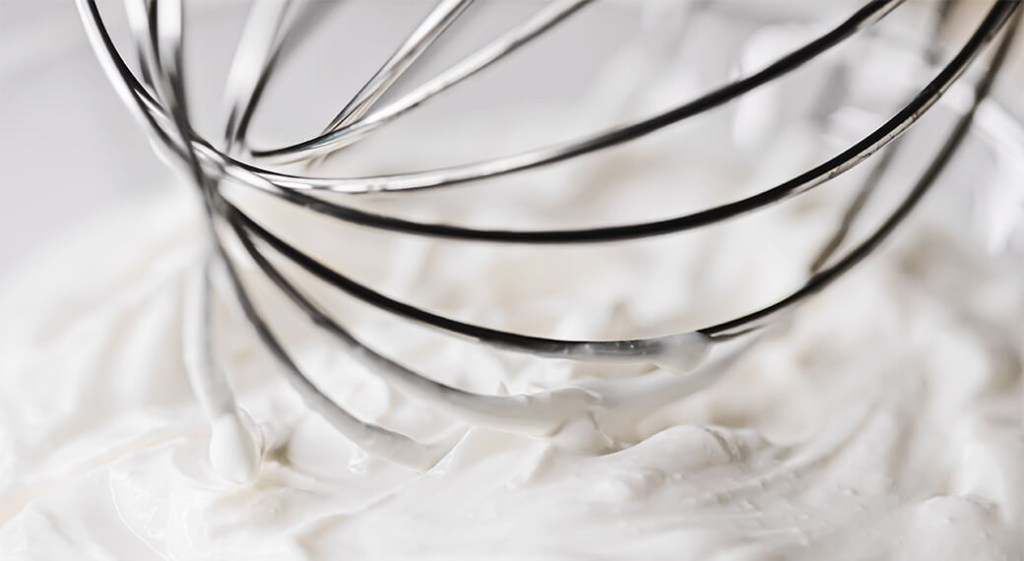


12+ Top-rated Cool Bakeware Sets With Lids | Kitchene Fix